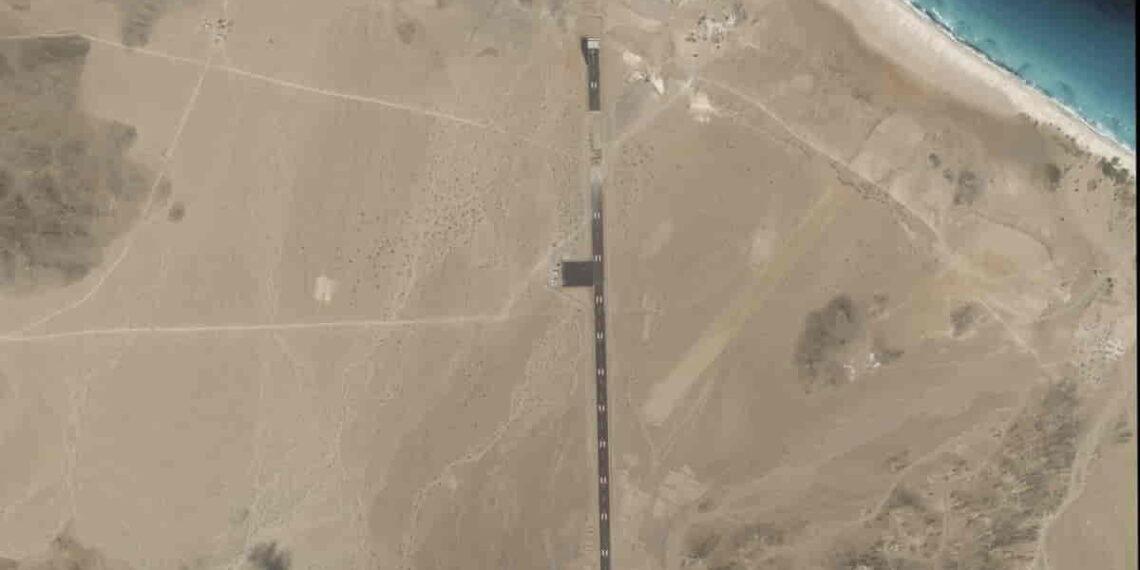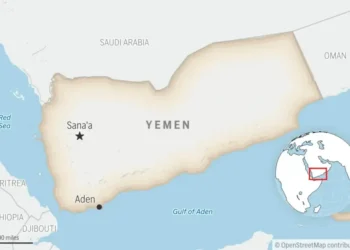Mysterious Airstrip Emerges on Yemeni Island as Houthi Rebel Threats Escalate
A new airstrip is rapidly nearing completion on the remote Abd al-Kuri Island in Yemen, raising concerns over its potential military use amid the ongoing conflict with Houthi rebels. Satellite images analyzed by The Associated Press reveal trucks and heavy equipment on-site as the airstrip nears its final stages of construction. The island, located in the Indian Ocean near the Gulf of Aden, could serve as a strategic landing zone for military operations in the region.
Strategic Significance of Abd al-Kuri Island
This new airstrip is being built in a region critical for global shipping. The Gulf and Red Sea, which see vital cargo and energy shipments to Europe, have faced repeated disruptions due to attacks by the Iranian-backed Houthi rebels. These attacks have halved commercial shipping activity, making the island’s airstrip a potentially vital asset for military forces patrolling the area. Experts also worry about weapons smuggling from Iran to the Houthis through this region.
Who’s Behind the Construction?
The construction is widely suspected to be funded by the United Arab Emirates (UAE), which has been actively involved in the ongoing Saudi-led military campaign against the Houthis. This airstrip could provide the UAE with increased military presence in the area, an effort tied to their backing of Yemen’s Southern Transitional Council.
Satellite images from January 7 show the runway almost completed, with the main segment of the 2.4-kilometer-long airstrip paved. While the airstrip can accommodate smaller private jets, its size likely excludes the landing of large commercial aircraft or heavy bombers. The UAE has previously been involved in similar infrastructure projects, such as an extended airport in Mocha and an unclaimed runway under construction near Dhubab.
Potential Threats and Regional Tensions
Abd al-Kuri Island lies in a historically strategic location, once used by Soviet warships during the Cold War. It is currently controlled by the Southern Transitional Council, which advocates for Yemen’s division into a north and south region. The UAE has backed this council’s efforts, leading to tensions with the Houthis, who accuse the Emirates of trying to “colonize” the island.
Despite the controversy surrounding its construction, the UAE maintains that their presence is focused on humanitarian aid and stability efforts in Yemen. However, experts suggest the airstrip could provide a platform for surveillance flights, disrupting weapons smuggling routes from Iran to the Houthis.
An Escalating Conflict
The Houthi rebels have been increasingly active, linking their campaign to the Israel-Hamas conflict, while continuing to target Israel and U.S. warships in the Red Sea. Their actions have raised global concerns about the threat posed to American service members stationed in the region.
As the UAE and other countries continue their efforts to disrupt Houthi operations, the ongoing military actions could contribute to a significant escalation of the conflict in Yemen. Experts like Wolf-Christian Paes suggest that the Houthis thrive on war, making a peaceful resolution unlikely in the near future. Despite possible ceasefires or external political efforts, experts predict that 2025 could see an intensification of the war.
International Reactions and Uncertainty
The UAE’s military presence in Yemen remains controversial, with the Houthis accusing the Emirates of espionage and violations of Yemeni sovereignty. As the situation intensifies, the U.S. and its partners have conducted over 260 strikes on Houthi positions, further complicating the conflict.
The potential re-designation of the Houthis as a foreign terrorist organization under a new U.S. administration could escalate the situation even further. Whether the conflict in Yemen will escalate or de-escalate depends largely on international political decisions, with experts uncertain about a peaceful resolution in the coming months.
This article was rewritten by JournosNews.com based on verified reporting from trusted sources. The content has been independently reviewed, fact-checked, and edited for accuracy, neutrality, tone, and global readability in accordance with Google News and AdSense standards.
All opinions, quotes, or statements from contributors, experts, or sourced organizations do not necessarily reflect the views of JournosNews.com. JournosNews.com maintains full editorial independence from any external funders, sponsors, or organizations.
Stay informed with JournosNews.com — your trusted source for verified global reporting and in-depth analysis. Follow us on Google News, BlueSky, and X for real-time updates.













